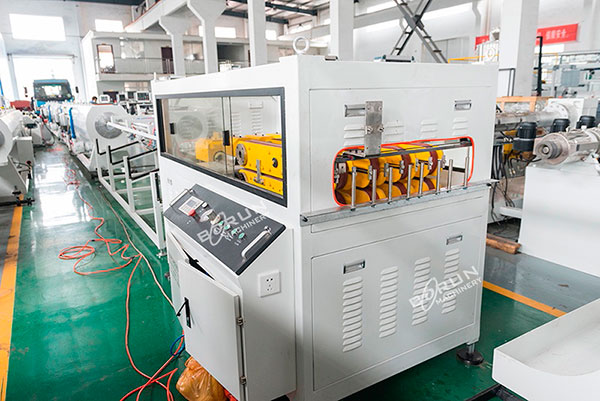- Call: +86-13584426116
- Email: info@borun-machinery.com
- Get a Quote
The extrusion of a thermoplastic profile is the production of a continuous product which in the plasticized molten state is forced to pass through a head. This head has the desired final geometry which gives shape to the product.
A good example can be seen in the PVC which are increasingly used in the manufacture of frames for doors and windows and other products for construction.
The PVCs are used due to their better properties (thermal and acoustic insulation, lighter, more ecological, etc.) compared to conventional materials such as steel and aluminum).
PVC profiles can have cross sections of complex geometry, require reduced dimensional tolerances and during processing this compound in molten state generates a corrosive gas, making the design of the heads for the production of these profiles a difficult task.

Now, let’s look at the blown film extrusion.
Blown Film Extrusion
The manufacture of plastic film for products such as shopping bags and webs is accomplished using a blown film line.
This process is the same as a normal extrusion process but with a special die that blows air through.
In this process, the three main types of dies used include spiral, spider, and annular. Spider dice consist of a central mandrel attached to the outer ring through a series of "legs" or branches; and although the flow is more symmetrical than with annular dies, this type of die forms a series of lines of union that weaken the film.
In the plastic extrusion line, there is an introduction of air under pressure through the extrusion die such that it expands in circumference after the polymer melt exits the lip of the die. The tube is also pulled along faster than it is being extruded. When this is done, the film is thinned as it expands in both the cross (or rim) and the machine direction. The blown ratio is the ratio of the blown diameter to the extruded diameter. This has significant influence on the physical properties of the film, such as the strength and stiffness. The film thickness and blow ratio can be varied by adjusting the speed of the rollers, the internal pressure in the blow tube, and the extrusion rate of the melt.
As the film is stretched upward, it is cooled by a ring of air blowers so that the melt becomes an amorphous viscoelastic solid, and then a semi-crystalline solid, in what is known as the freeze line. The cooling of the blown film tube continues after solidification process, while various sets of rollers pulls it upward, deflating the film to form a flattened tube. The flat film is wound on a spool before further finishing or shipping. The height of the film line is often 10 times the diameter of the blow tube or more; Film lines in excess of 30 meters are possible.
After the tube of film has completely cooled, it is taken up by several pressure rollers. The width of the resulting folded flat film is equal to half the circumference of the blow tube. The film is then rolled up, either as a flattened tube, or immediately divided into two separate pieces. At this point, the film is ready for further processing, such as printing or cutting.